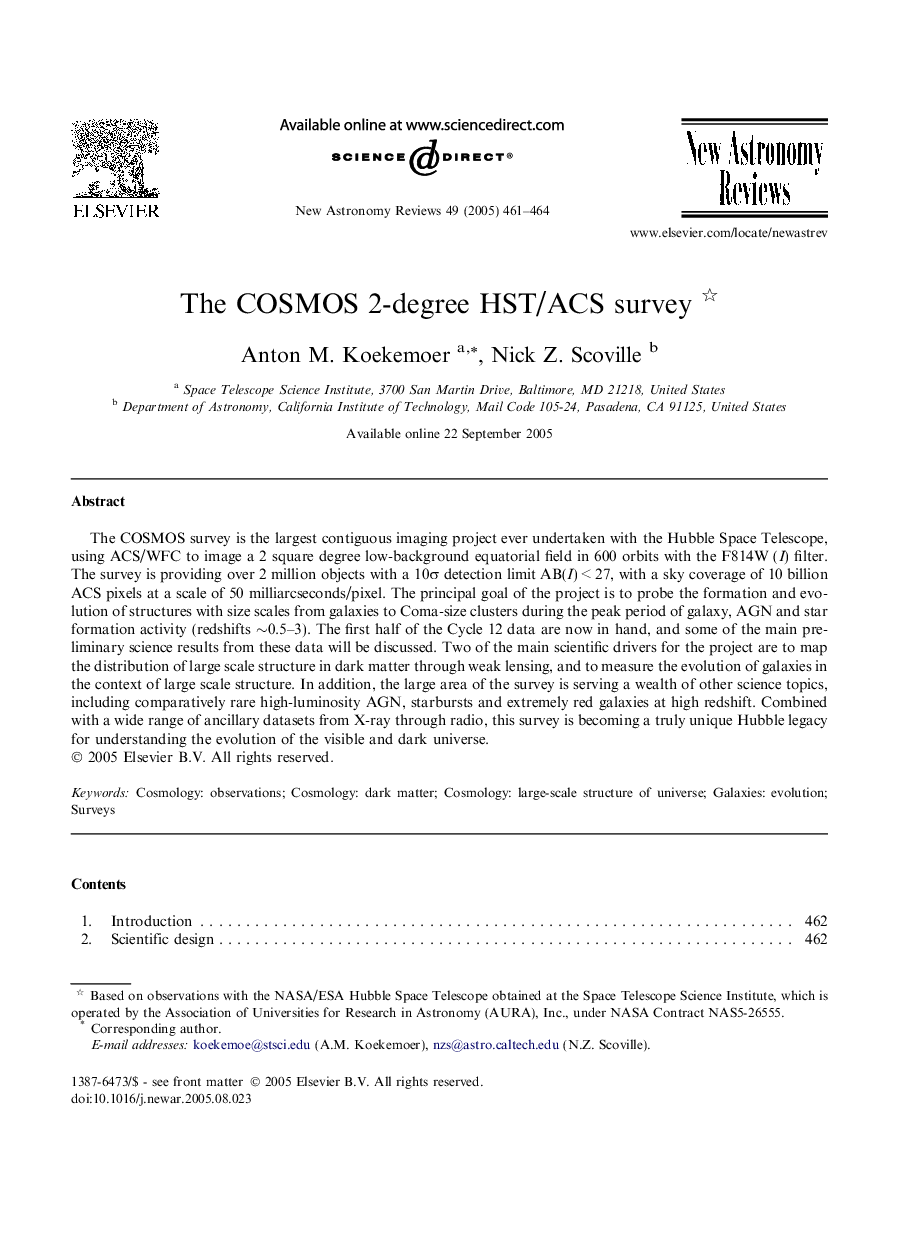| Article ID | Journal | Published Year | Pages | File Type |
|---|---|---|---|---|
| 9827986 | New Astronomy Reviews | 2005 | 4 Pages |
Abstract
The COSMOS survey is the largest contiguous imaging project ever undertaken with the Hubble Space Telescope, using ACS/WFC to image a 2 square degree low-background equatorial field in 600 orbits with the F814W (I) filter. The survey is providing over 2 million objects with a 10Ï detection limit AB(I)Â <Â 27, with a sky coverage of 10 billion ACS pixels at a scale of 50 milliarcseconds/pixel. The principal goal of the project is to probe the formation and evolution of structures with size scales from galaxies to Coma-size clusters during the peak period of galaxy, AGN and star formation activity (redshifts â¼0.5-3). The first half of the Cycle 12 data are now in hand, and some of the main preliminary science results from these data will be discussed. Two of the main scientific drivers for the project are to map the distribution of large scale structure in dark matter through weak lensing, and to measure the evolution of galaxies in the context of large scale structure. In addition, the large area of the survey is serving a wealth of other science topics, including comparatively rare high-luminosity AGN, starbursts and extremely red galaxies at high redshift. Combined with a wide range of ancillary datasets from X-ray through radio, this survey is becoming a truly unique Hubble legacy for understanding the evolution of the visible and dark universe.
Keywords
Related Topics
Physical Sciences and Engineering
Physics and Astronomy
Astronomy and Astrophysics
Authors
Anton M. Koekemoer, Nick Z. Scoville,
